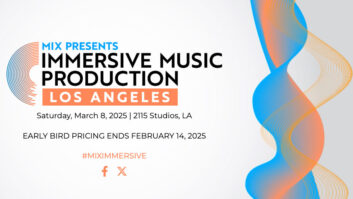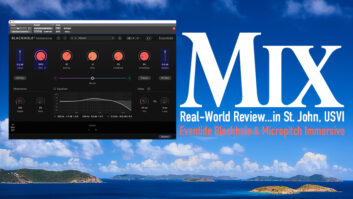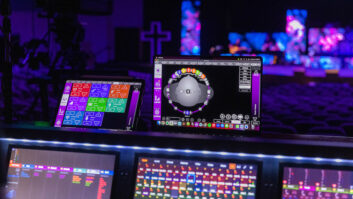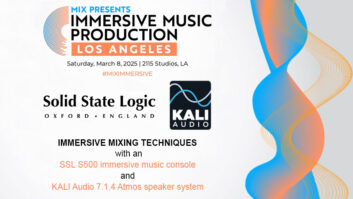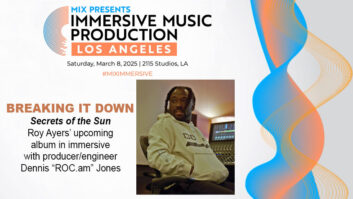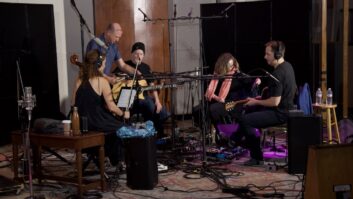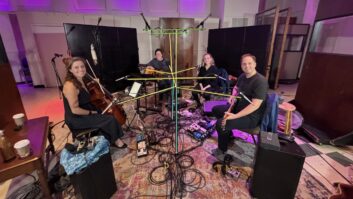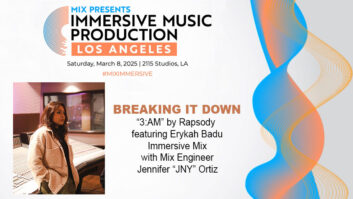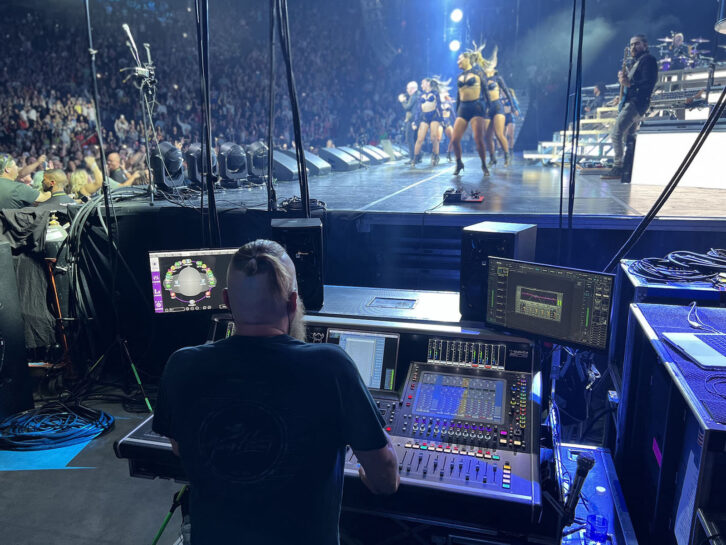
Miami, FL (March 21, 2023)—After the pandemic peaked, seemingly every artist went back on the road in 2022, but few did so with the zeal of Pitbull. The pop/rap artist did a jaw-dropping 210 days out as he circled the globe with The Agents (his band), dancers and production team in tow. Keeping tabs on the band’s monitor needs, engineer Matt Holden served up immersive mixes for the musicians with the help of a newly added DMI-Klang card in his DiGiCo Quantum5 console at stageside.
Having tackled the Pitbull camp’s monitors for the past eight years, Holden was more than familiar with what the six members of The Agents needed to pull off a show, so he used the DMI-Klang to provide a half-dozen immersive band mixes—drums, percussion, bass, guitar, keys and DJ—plus two guest mixes, a tech mix and a playback engineer mix.
Mix Immersive Music Production Nashville Announced for May!
Of course, while musicians might be clamoring for an immersive mix, introducing it into their IEMs required some forethought so that it wouldn’t be an immediate yay-or-nay situation when they finally tried using it.
“I spent a lot of time building a great sounding mix on my guest mixes during the first week of tour rehearsals, which was a good way to understand how it all works and play with different positions,” said Holden. “From there, I just started tweaking it for the drummer’s mix, and when I felt confident enough, I copied it over to his mix, and it only took about five minutes to get him set. Then I just worked my way through each band member. After spending a week playing around with everything, I put them all on Klang mixes in a single day.”
Working in an immersive space required designing the mixes with the specific player in mind, he said: “With 15 channels of drums and 13 channels of percussion alone, I was able to nicely spread everything around, with drums in the front of the mix as you would visually see them. Percussion was around the back side of the mix, which I inverted for the percussion player. I tended to place low-end instruments—kick ‘out,’ bass, bass synth, and 808s—fairly low behind me, but the kick ‘in’ would be in front at chest height. It really made a connection with the low end that I wasn’t able to achieve before. After that, it was also very easy to simply spread around the keys and guitar in the ears.”
The engineer also had the show’s tracks running through Klang, though the consensus was to keep them in the traditional stereo space. “I was definitely able to lower the click track quite dramatically, though,” he adds. “I used our DPA 5100 5.1 mic setup at the FOH position along with two Shure Beta 57 on stage left and right for audience mics, which helped me create a huge sounding crowd and really put the band back in touch with the audience.”
